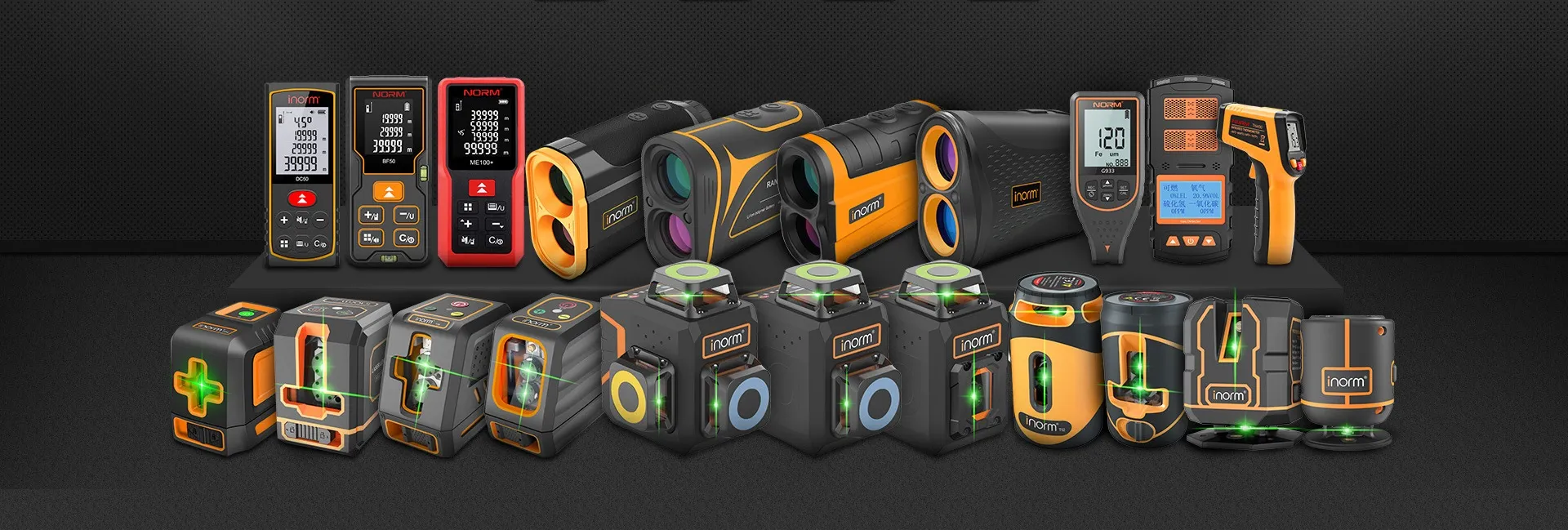Calibration Methods for Laser Levels
Manual Calibration
- Horizontal Line Adjustment: For laser levels with adjustable components, start by setting up the instrument on a perfectly flat surface. Project the horizontal laser line. Using a high - precision spirit level or a reference surface of known flatness, compare the laser line. If there is a deviation, some models allow for manual adjustment of the laser - emitting mechanism. This usually involves loosening small screws or using an adjustment knob to tilt the laser emitter slightly until the laser line aligns with the reference.
- Vertical Line Calibration: Similar to horizontal calibration, mount the laser level securely on a vertical surface. Project the vertical line and use a plumb bob as a reference. If the laser line is not straight, make small adjustments to the laser emitter's vertical alignment. This may require careful manipulation of internal components accessible through calibration ports on the device.
Calibration Using Professional Tools
- Optical Bench Calibration: An optical bench is a highly accurate platform used in calibration laboratories. Place the laser level on the optical bench. The bench has precision - aligned reference axes. By comparing the laser beam's output with the reference axes using specialized optical detectors, any angular or linear deviations can be precisely measured. Based on these measurements, adjustments can be made to the laser level's internal optics or mechanical components to correct the beam alignment.
- Electronic Calibration Devices: There are also portable electronic calibration devices available. These devices emit known reference signals that the laser level can interact with. For example, a device may emit a specific frequency or pattern that the laser level's sensors can detect. The laser level's readings are then compared to the known values from the calibration device. If there are discrepancies, the calibration device can guide the user through the process of adjusting the laser level's settings to bring it back to accuracy.
Factory Calibration
- Return to Manufacturer: When in doubt about calibration or for the highest level of accuracy, returning the laser level to the manufacturer is a reliable option. The manufacturer has the original design specifications and specialized equipment to perform a comprehensive calibration. They can not only adjust the laser level to its factory - set accuracy but also replace any worn - out or damaged components that may be affecting the calibration. The manufacturer will typically use a series of tests and adjustments in a controlled environment to ensure the laser level meets strict quality standards.
- Authorized Service Centers: In addition to the manufacturer, many laser level brands have authorized service centers. These centers are trained and equipped to perform calibration procedures according to the manufacturer's guidelines. They can provide a quicker turnaround time compared to sending the device back to the factory, especially if the service center is located nearby. Service centers often have a range of replacement parts in stock, allowing them to address any mechanical or electronic issues that may be related to calibration problems.
Calibrating your laser level regularly is essential to maintain its accuracy. The choice of calibration method depends on the type of laser level, the required accuracy, and the available resources. Whether you opt for a DIY manual calibration or a professional service, ensuring your laser level is calibrated correctly will result in more precise work in your projects.


